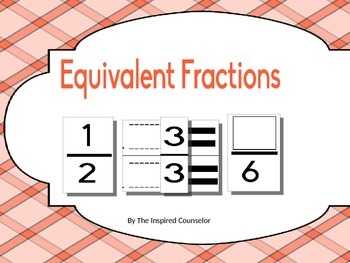Introducing the concept:
To introduce the concept of equivalent fractions, I first used an example with colored Easter eggs across a pole. On the top, I put one yellow egg, and on the bottom I put two blue eggs (for the fraction 1/3). I also put a number with each ("1" on top, "3" on bottom), explaining that the bottom number is the total number of eggs. I explained that for every ONE egg on the top there would be TWO eggs on the bottom. I then added another yellow egg to the top, and changed the top number to "2", and asked how many more blue I would need to add to the bottom. They said they would need two more. I then changed the bottom number to reflect the total number of eggs, 6. I then explained that it's still the same fraction as the first, which we call equivalent fractions.


After a few more examples of this, I started introducing the math of the fractions. What did we need to multiply the top and bottom number by in this example? (2)
Next, using my Equivalent Fractions Activity, I walked them through solving equivalent fractions problems.


No comments:
Post a Comment